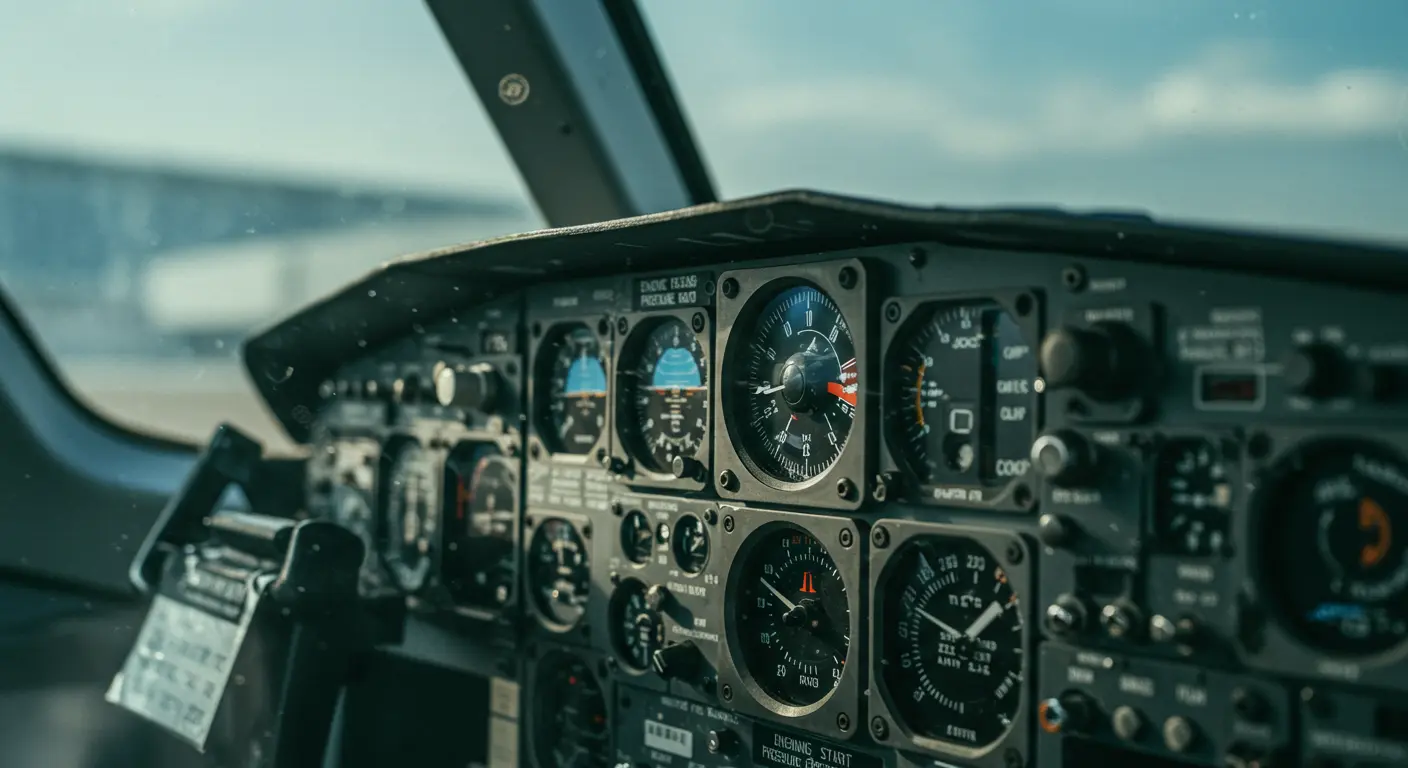What is a Hung Start in Turbine Engines?
A hung start represents a critical malfunction during engine startup where the turbine ignites successfully but fails to accelerate properly to self-sustaining idle speed. The RPM gets stuck at a dangerously low sub-idle level, typically hovering between 30-60% of normal operating speed, leaving the engine unable to achieve independent operation.
The warning signs are clear: abnormally elevated exhaust gas temperatures (EGT) resulting from inefficient combustion and inadequate airflow. While combustion persists, the engine simply lacks the power to stabilize or advance beyond this precarious state.
Left unchecked, this condition threatens for engine damage through catastrophic overheating. The failure renders the aircraft powerless to reach flight capability, effectively grounding it until resolution—making hung starts a serious concern for both pilots and maintenance crews.
Causes of Hung Start in Turbine Engines
Insufficient airflow for efficient combustion causes most hung starts, starving the engine of the power needed to climb to idle speed. Key contributing factors include:
-
Contaminated Compressor: Accumulated dirt or debris restricts airflow and compromises compression efficiency—a problem that intensifies at high altitudes where the air grows thin.
-
Insufficient Starter Power: When the starter falters—whether from electrical, pneumatic, or mechanical failures—it cannot spin the engine fast enough to generate the critical airflow needed for successful ignition.
-
System and Environmental Factors: Other factors include mechanical issues to include improper fuel/air mixtures, ignition malfunctions, heightened internal friction, and harsh environmental conditions—freezing or high humidity—that alter air density.
Monitoring Parameters to Prevent Hung Start
The moment a hung start reveals itself, the first priority is: immediately cutting the fuel supply. This action halts combustion and prevents serious overheating damage.
As the engine winds down, maintaining starter engagement is essential. This sustained rotation serves a dual purpose: purging unburned fuel from the combustion chamber while cooling internal components, thereby preventing a subsequent hot start.
Before any restart attempt, a dry crank procedure—spinning the engine with the starter while withholding fuel—may be required to flush residual fuel and establish optimal conditions.
Preventing hung starts requires careful monitoring of RPM, EGT, and fuel flow throughout the startup sequence. Abnormal readings—sluggish RPM acceleration or rapid EGT increases—serve as early warning signals, enabling corrective intervention per the aircraft’s flight manual protocols.
Differences Between Hung Start and Hot Start
Though both represent engine start failures, hung starts and hot starts diverge dramatically in their symptoms, underlying causes, and the corrective measures they demand.
| Feature | Hung Start | Hot Start |
|—|—|—|
| Primary Symptom | Engine fails to accelerate; RPM ‘hangs’ at a sub-idle speed (e.g., 30-60%). | Engine temperature (EGT/ITT) exceeds specified limits during start. |
| Temperature | EGT rises but typically remains within limits. | EGT/ITT rises rapidly and exceeds limits, risking thermal damage. |
| Primary Cause | Insufficient airflow, starter power, or a contaminated compressor. | Excessive fuel (over-fueling), residual engine heat, or late ignition. |
| Immediate Response | Cut fuel supply; keep starter engaged to cool and purge the engine. | Cut fuel supply immediately to prevent catastrophic thermal damage. |
Best Practices for Turbine Engine Starting
The startup sequence commences with the starter working to overcome the compressor’s inherent inertia. Achieving adequate compressor speed for proper airflow is essential before introducing fuel and ignition into the equation.
Execute a comprehensive pre-start checklist, checking fuel pressure, electrical system integrity, and control positioning. Environmental factors—extreme temperatures or high altitude operations—may necessitate procedural modifications and require attention.
Throughout the start sequence, monitor closely over engine parameters: N1/N2 acceleration rates, EGT progression, and oil pressure development. Even minor deviations from expected values may indicate an emerging malfunction.
Upon achieving idle, patience is important—allow sufficient warm-up time for thermal stabilization and optimal lubrication before advancing power. Rushing this critical phase invites thermal stress and potentially catastrophic component damage.
Follow manufacturer-specified cool-down periods before shutdown, preventing heat soak complications that may affect future start attempts. Proper starting and shutdown procedures are critical for engine longevity and reliability.
Conclusion: Understanding Hung Start Risks
A hung start poses serious risks beyond simple operational delays. Unchecked overheating can inflict severe engine damage, culminating in expensive repairs or complete replacement. Repeated failed start attempts without proper troubleshooting significantly increase these risks.
Mastering this condition requires three key elements: diligent parameter monitoring, strict adherence to procedures, and comprehensive understanding of its causes and symptoms. Such knowledge is fundamental to turbine engine reliability and aviation safety as a whole.

